In a recent podcast, we spoke to the founder of one of our best-performing clients: ICON Communications.
A multilingual contact center based in Prague, ICON has its B2B referral strategy down to a tee. After 18 years in business, the brand now gets 80% of its revenue opportunities through customer referrals, meaning they keep acquisition costs low and are truly optimizing customer lifetime value.
How does ICON do it? According to CEO and founder, Helen Hickin, the answer’s simple: customer feedback.
“One of our core pillars is that we want feedback,” says Hickin.
“Sometimes that feedback hurts and sometimes we're super proud of it, but in any case, we need that feedback. That’s why the business has grown and not just from clients and colleagues, but from our workforce as well.”
Painful or not, B2B customer feedback has given Hickin and her team the data they need to drive growth, and the results speak for themselves.
ICON has learned that it’s not enough just to collect customer feedback, you need to act on it, too.
“The reason that we're getting such a phenomenal return rate is that clients can see results from going through the process,” says Hickin. “We listen, we're putting plans in place, and we're doing something about it.”
According to a recent survey we ran, over one in four businesses said that acting on customer feedback is the hardest thing about Net Promoter Score (NPS).
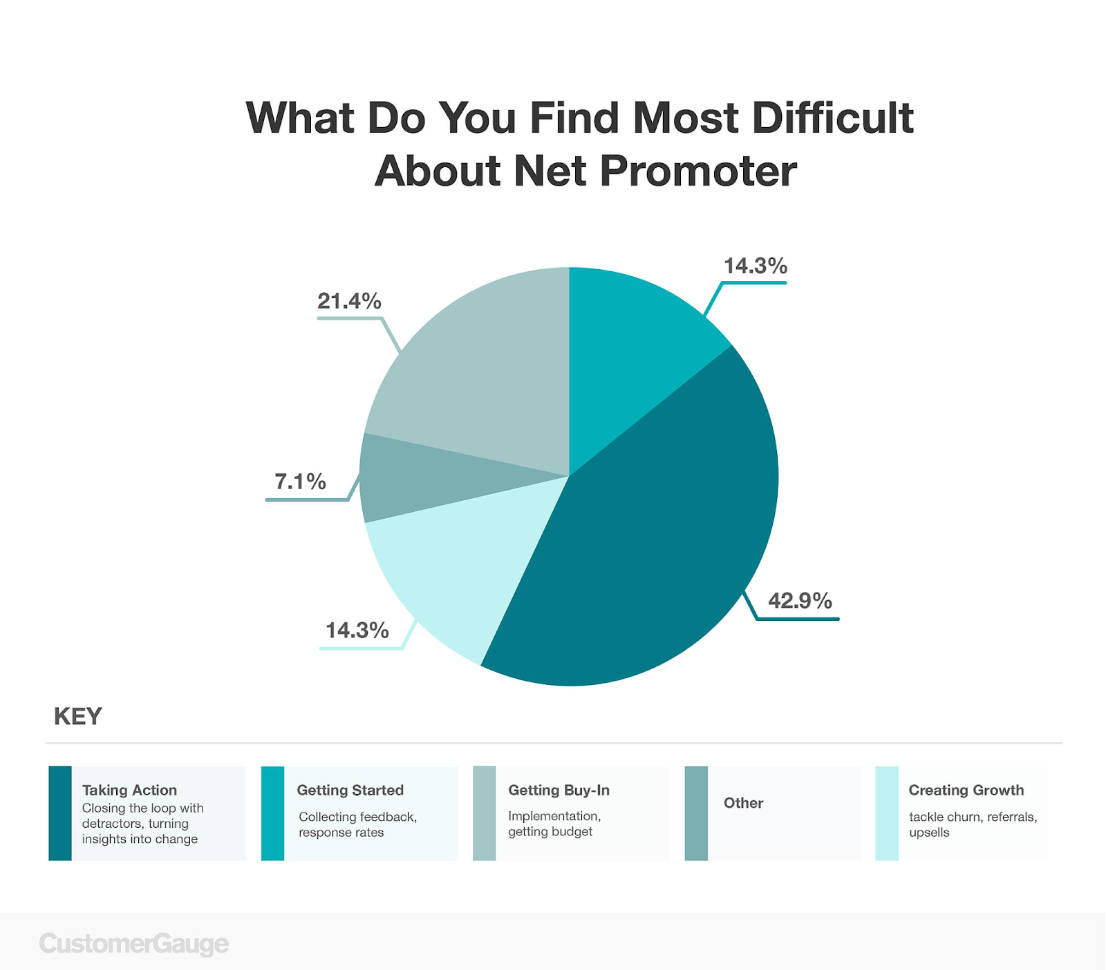
In this guide, we’ll show you how it’s done. But first, let’s remind ourselves why B2B customer feedback matters so much.
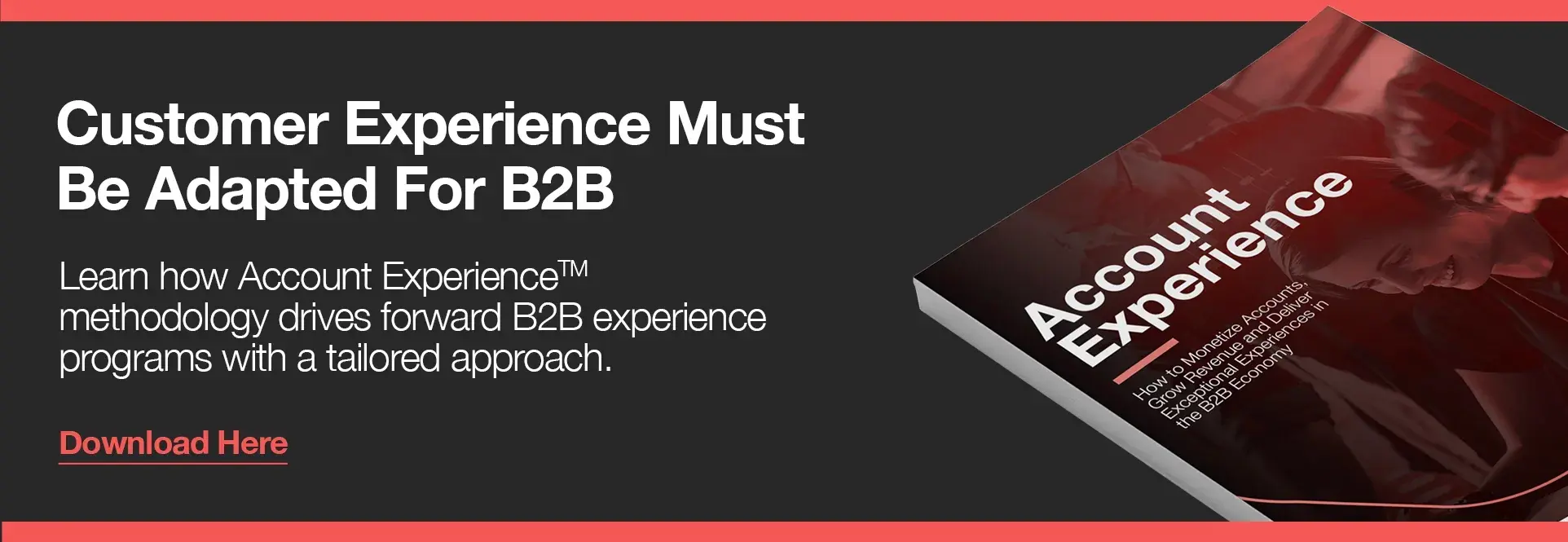
The Power of B2B Customer Feedback
As any business that’s truly leveraged the power of customer feedback will tell you, it’s an indispensable tool for growth. Yet, somehow, that’s still not common knowledge.
Unfortunately, many still don’t appreciate the impact it has on their bottom line. In fact, our research found that 63% of B2B brands don’t know the ROI of their CX program.
But here’s the reality: customer feedback gives you the data on how your customers are feeling, so that you can earn growth, rather than just buy it.
With this insight into your customer experience (CX), you’ll be better able to prevent customer churn, identify and seize upsell opportunities, and drive customer referrals (just like ICON).
Let’s dig into this in greater detail.
By collecting customer feedback, you’ll improve the experience for customers. Do they tell you they want better customer service? Or that they’d prefer easier onboarding? By acting on that feedback, you’ll make sure you’re giving all your customers exactly what they want.
You’ll reduce churn and increase customer lifetime value. By understanding how your customers feel about your products and services, and where they feel let down, you can intervene before they churn. This drives customer loyalty and increases the total value of every customer.
You can spot opportunities for growth. Is a customer satisfied but actually spending only very little? They might be a good opportunity for an upsell. Alternatively, are they so happy with your service that they’d be willing to refer you elsewhere? Only by collecting customer feedback will you know for sure.
However, there’s a caveat. Not every framework for collecting B2B customer feedback helps you drive business growth. Too many methodologies and tools only help you to churn out customer surveys, then sit on the results.
To have a true impact, you need a feedback program that’s laser-focused on growth.
We built Account Experience (AX) to do exactly that. By automating and monetizing your customer feedback, you’ll understand the real value of what customers are saying about you.
“Account Experience programs that are generating revenue and blowing benchmarks out of the water are focusing on two major metrics: response rate and close the loop rate. That’s why here at CustomerGauge, we’ve set ourselves and our customers the goal of 100% account response rate."
How to Collect B2B Customer Feedback
At CustomerGauge, our Account Experience methodology is built around Net Promoter Score.
The most widely used framework for collecting B2B customer feedback out there, NPS has two distinct benefits over other survey methodologies.
Firstly, it’s quick and easy for your customers, meaning that you’re more likely to achieve a high NPS response rate. (ICON Communications gets a 100% response rate on their surveys—and that’s what you should be aiming for too.)
It’s the most accurate predictor of growth. NPS fundamentally gauges customer loyalty by asking customers how likely they are to recommend you to others. Research found that this likelihood is the most accurate indicator of a business’s future growth.
But you need to get it right. That means following four crucial steps.
1. Run Relationship and Transactional NPS Surveys
There are two crucial types of NPS surveys, which we call relationship and transactional surveys. They both ask the same fundamental question—i.e. how likely are you to recommend us?—but they do it in different contexts. You should be performing both types.
Relationship NPS surveys are surveys that track the temperature of your customer relationship over time, regardless of how that customer has interacted with you. We recommend that you run these every quarter, so you have a constant understanding of how your customers are feeling.
Alternatively, there are transactional NPS surveys. Did a customer just buy something new? Did they just resolve a problem with customer service? Did they interact with your brand in a different way?
Ask them how it went. Rather than the overall relationship, this gives you an insight into that specific touchpoint—to show you how you’re performing across specific elements of the customer journey.
Used in combination, these types of surveys will paint the fullest possible picture of your customers’ sentiments.
💡 Marianne Mølgaard, Service Operations Specialist at Dun & Bradstreet built out a new CX program after the acquisition of her previous company. Dun & Bradstreet expanded to 15 CRM systems, 14 languages, and various cultures where they continuously test NPS survey strategies with a strong focus on data and closing the loop.
Here she shares how important it is to get the data right with an example of when she sent out a transactional survey:
2. Make Response Rate a Key Metric
We already mentioned above that you should be aiming for as high a response rate as possible.
Now, that’s not because statistical significance is your priority. Rather, it’s because every survey response you receive is the basis for action.

At CustomerGauge, one of our fundamental beliefs is that NPS is not a research tool, it’s an action tool. If one customer replies, you have the chance to improve their experience and make them a promoter. If many customers reply, you have many greater opportunities for growth.
However, we know full well that not every customer will reply. That’s why Account Experience enables you to monitor product engagement and support requests, too, so that you have a 360-degree view of all your customers, even if they’re not responding.
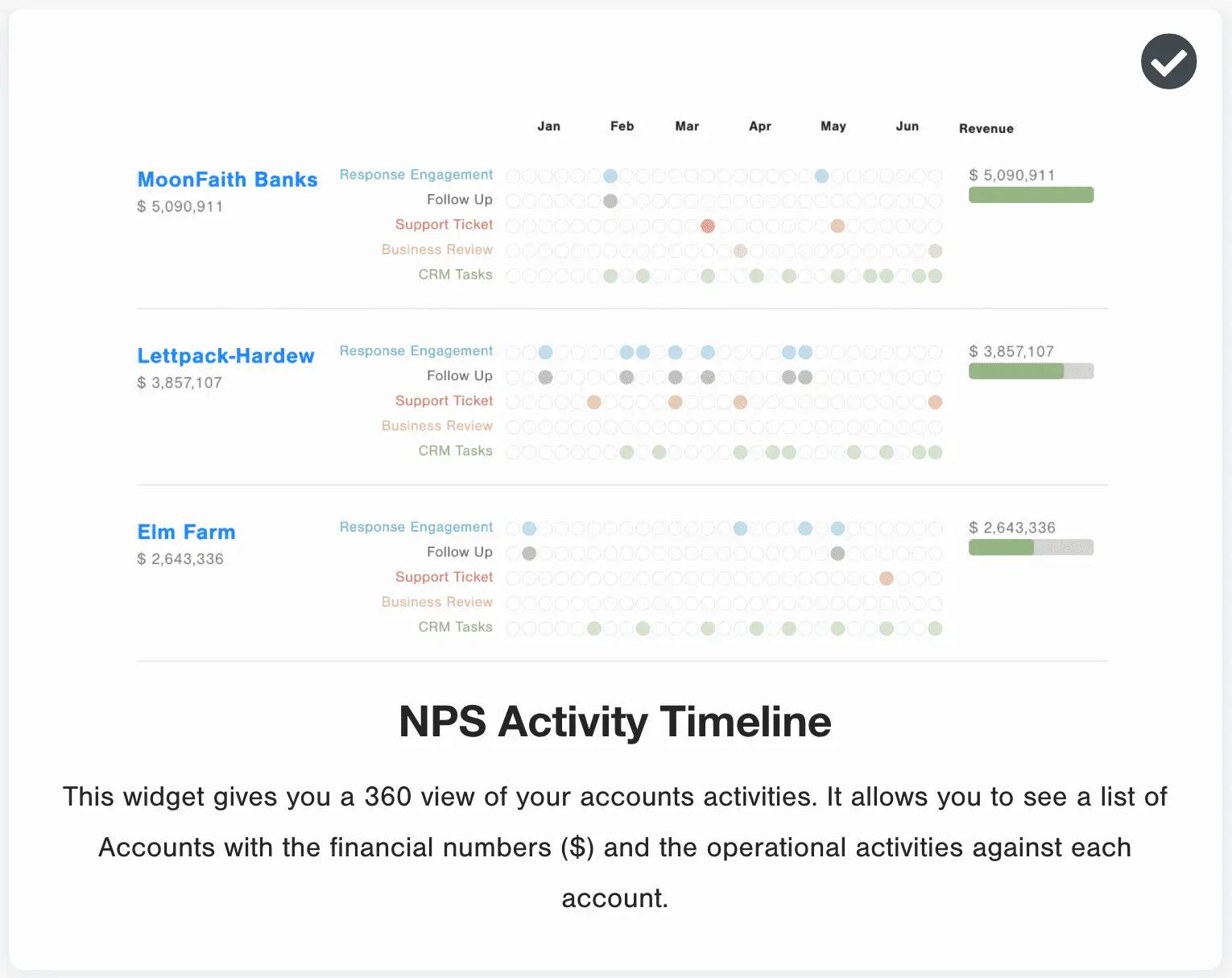
3. Optimize Account Coverage
As you’ll know, B2B account management is more complex than B2C. That’s because rather than just engaging with single-member accounts, B2B accounts can consist of hierarchies of many stakeholders, often ranging from the c-suite to frontline staff.
Ideally, when collecting B2B customer feedback, you want to hear from all of them—or at least as many as you can.
Why? Because opinions within a single account can differ. While one contact may be really happy, another may have reservations. Or worse, only one person may actually be using your product at all.
If that’s the case, you’re in quite a precarious position: the less coverage you have in each account, the greater the risk of churn.
Receive a clear view of how many contacts are engaged within each account with Account Experience to optimize feedback and increase the likelihood of retention.
Analyzing Customer Feedback
So, you’ve got started with your customer experience program and survey results are starting to trickle in. But what exactly is this customer feedback telling you?
While you can get into the details of this in our guide to NPS analysis, there are three crucial elements to consider here: identifying detractors, tracking non-responses, and linking your CX data to financial metrics.
1. Identify Your NPS Promoters and Detractors

When B2B brands run their NPS surveys, one of the first things they want to do is calculate their NPS score.
But hold fire.
“Don't focus on the score. It's the first and most common mistake to make,” as Ben Phillips, Head of Customer Experience Performance at Fujitsu, told us in a recent survey of secret tips to NPS success.
“Think of [your NPS score] as an outcome, not the goal. The goal is to change behaviors. NPS results will reflect your success in being able to do that.”
He’s absolutely right — far too many brands obsess over their NPS score. But it’s not half as important as the action you take to improve it.
The first thing you should do? Identify your happy and unhappy customers, i.e. who your promoters and your NPS detractors are. Doing so will guide you in finding the particular actions each customer needs.
Only later on does your NPS score come into its own. If you’ve improved over time, however low your score has been, you’re on the right track.
2. Attend to the Customers Who Haven’t Responded
We said above that response rate should be a key metric in your customer feedback program. But you shouldn’t be focused solely on those that have responded. One of the most useful signs you can get from a customer is a lack of response.
Why? Because it usually means that they aren’t engaged, and from there it’s a slippery slope to churn.
Part of an effective B2B customer feedback program is the ability to track where and when customer accounts are engaging with you. If they’ve just missed a single survey, that’s one thing. But if they’re not putting in support tickets, showing up to meetings, or even using your product, there’s likely to be a problem.
3. Link Your CX Data to Financial Metrics
So you’re nearly ready to act on your customer feedback. But you’re still missing a crucial aspect of your analysis. That’s tying your feedback to revenue data, or monetizing NPS.
Say you have two customers. One is on a contract worth $1 million a year and they’ve told you they’re pretty unhappy. But another is worth ten times more (it happens) and they’re unhappy too.
Where do you put your efforts? Obviously with the larger account. They pose a much greater revenue churn-risk than the other. The trouble is that NPS alone doesn’t give you this insight. You have to tie it to revenue to make sure you're taking informed action.
But there are more nuanced lessons that linking CX to financial data can teach you.
Say a customer is really happy, but they have a small account size. This could be an ideal opportunity for upselling. A tool such as CustomerGauge’s SWOT analysis gives you a breakdown of the different types of customers you have, cross-referencing account size and NPS.

Wajax, used CustomerGauge to analyze the relative value of their customers. As a result, they discovered that their promoters were worth twice as much as their detractors, providing the evidence they needed of how customer experience was driving revenue growth.
Find out more here.
Acting On Customer Feedback
Now that you know what your customers are telling you, it’s time to act to improve your customer experience and drive revenue growth.
That means you need to do four things.
1. Close the Loop on All Customer Feedback
Closing the loop is the process by which you respond to customer feedback and ensure that action is taken. It’s a crucial part of your whole customer experience management strategy.
Ultimately, it’s this that makes providing feedback valuable to your customers. If they respond to your survey and hear nothing from you in response, they won’t bother doing it again, and will likely lose trust in you in the meantime.
But if they give you feedback and you act on it, and then respond to that customer telling them what you’ve done to improve their experience, you’ve likely won yourself a loyal customer.
In fact, at CustomerGauge, we recently ran some research that showed that companies that closed the loop on customer feedback had three times as many promoters the next time they ran a survey.
What’s more, companies that closed the loop reduced their churn by a minimum of 2.3% a year.
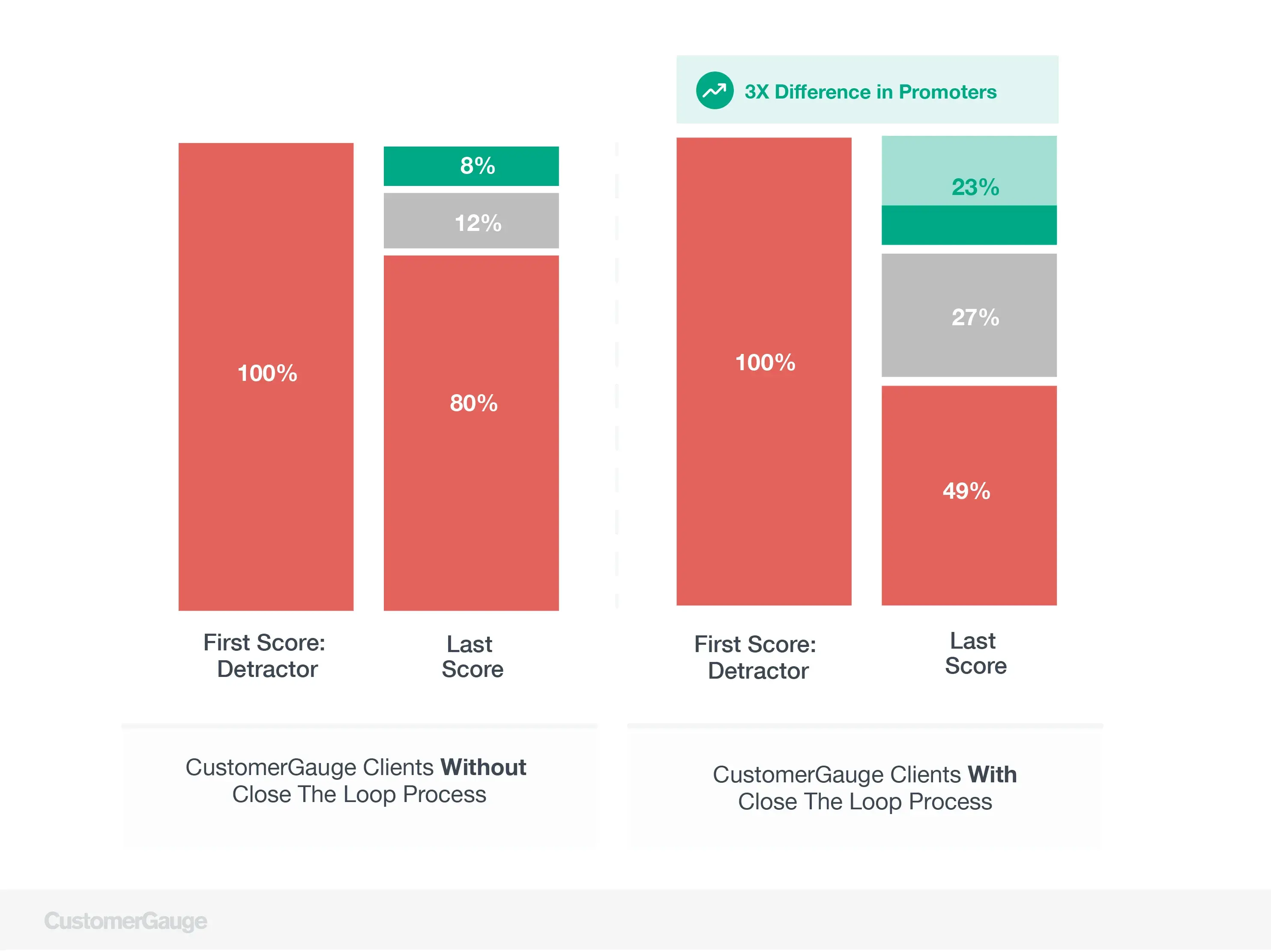
So, how do you do it? Well, customers are giving you the answer.
If they tell you that your customer service is disappointing, find out why and do something about it. But if they’re telling you that customer service and onboarding are both disappointing, find out which is costing you more and act there first.
Then get everyone involved with closing the loop at every level of your business. The key thing is to do it quickly. Our research has shown that closing the loop within 48 hours can lead to a 12% increase in retention.
Let’s hear from Cary again:
“Most businesses only close the loop on one level and that’s generally the front line. This is an ineffective way of following up with your customers and shows the lack of maturity of the CX space across B2B industries. What you want to do is close the loop at all three levels — frontline, middle management, and C-suite — in your customer account”.
2. Intervene with Churn Risks
The whole process of collecting and acting on customer feedback is a way to reduce churn in the long term. However, there are times when you have to swoop in with customers fast so that they don’t walk out of the door.
Every detractor is a possible churn risk. Every passive account is also one that may be at risk of going to a competitor. And every account that’s no longer engaging or responding to surveys should be treated as a churn risk too.
Your job is to find a way to engage them and make them stay:
Analyze why they are a detractor or non-responder. If they have answered your survey, they’ll likely be telling you why they’re unhappy. If not, you need to reach out to them and ask.
Re-engage non-responders. If customers aren’t responding to your surveys, find another way to engage them. Can you reach them through a different channel, for example? Can you incentivize survey response? Or are you able to schedule a call or meeting to see what’s up?
Close the loop. If customers are unhappy, listen to their feedback and find a solution that can make them stick around.
There’s no silver bullet to make at-risk customers stick around. But it’s fundamental for your bottom line that you try.
The place you should start to manage retention is to measure it. 49% of B2B brands don’t do it. But churn is having a cost no matter what you’re doing—and doing nothing will be a brake on your revenue growth.
3. Identify Opportunities for Upsells
Upsells are moments when you can deliver more value to your customers and build a deeper relationship with them. It’s one of the key ways to increase customer lifetime value and earn growth.
However, upsell isn’t something you can force. Rather, upselling successfully means identifying the right moments to expand that relationship.
To do this, you need to determine which accounts have the potential to grow — those in which not every user is getting value from you, or those that aren’t spending as much as accounts of similar sizes.
But it also means finding the accounts that are satisfied with your relationship. If they’re happy already, there’s a good chance that they will want more value.
Now, you need to pounce. Your account managers should know both your customers and your product range really well, so that they can seize the opportunities when they come around.
Mapping out the key trigger moments can help:
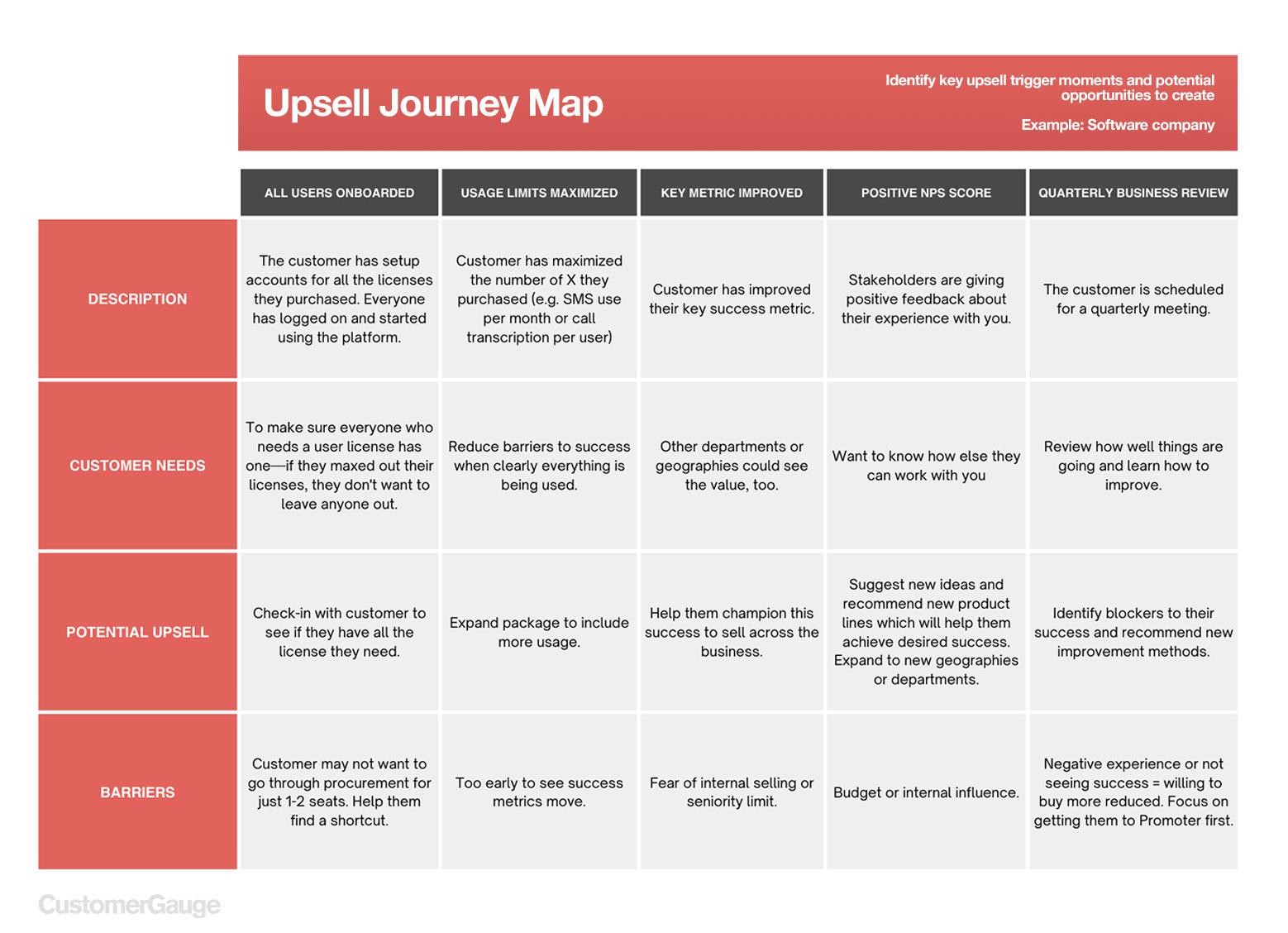
4. Secure Referrals
At the beginning of this article, we introduced you to ICON Communications, who get 80% of their revenue from referrals.
It’s an impressive achievement, that’s for sure, but we’ll let you in on a little secret: you can achieve that, too.
By running NPS surveys, you’re already asking your customers whether they would be willing to refer you to their colleagues and friends. If they tell you that they would be—i.e. they are a promoter—it’s your job to make sure that they do.
What this requires is surprisingly simple:
Activate your promoters. Your enthusiastic customers have already told you that they would be likely to recommend you to a friend or colleague. You need to turn that will into a concrete action.
Share happy customers with your sales team. There’s nothing your sales department will want more than receiving a list of highly satisfied clients to ask for a referral, case study, or review. But it doesn’t have to be your sales team that does it—account managers or marketing teams can too.
Make sure you act fast. At CustomerGauge, our teams receive a notification whenever a customer leaves a high score. Someone is assigned the task to reach out to the promoter and ask for something. They have 5 days to do it.
Ask for an upsell, too. Referrals and upsells aren’t mutually exclusive. Don’t forget that happy customers can offer both.
You’re Ready to Get Started With CustomerGauge
You know how to do it, so now it’s time to get started with customer feedback.
Building a really effective process for collecting customer feedback can be difficult. But as our VP for Program and Education, Cary T. Self, regularly points out, “it doesn’t have to be perfect”:
“Just get started! If you are waiting for perfection in your program or for all your data to be clean, you’ve missed the point of a retention program. We’re all losing customers because it’s not perfect! We all have flaws and opportunities to improve. The purpose of the program is not to wait until everything is fixed—it’s to identify what our customers are not happy with and improve.”
It’s an important point. Every bit of customer feedback that you receive is something you can use to build growth. And there’s no better time to get started than right now.
Let CustomerGauge help you drive growth through B2B customer feedback. Book a demo to find out how.

